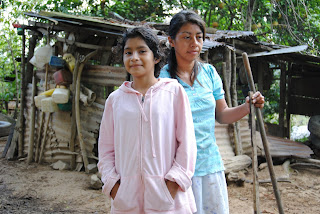We are now promoting daily chlorhexidine bathing of all adult patients at VCU Medical Center. The infection prevention benefits of chlorhexidine have been mentioned here. Due to potential concern about toxicity of chlorhexidine in pediatric populations, the roll out of chlorhexidine bathing excludes children in our institution. Here is an article in The Lancet on chlorhexidine bathing in pediatric populations that may drive a practice change.
The investigators used an un-masked, cluster-randomized, two-period crossover trial across ten pediatric intensive-care units at five US hospitals. Patients older than 2 months were randomly assigned a daily bathing routine of standard bathing practices vs. a cloth impregnated with 2% CHG.
Analyses were intention-to-treat (ITT) and per-protocol (PP).
A total of 4947 pediatric admissions were eligible for analysis. In the ITT population, a non-significant reduction in incidence of bacteraemia was noted with CHG bathing (3·52 per 1000 days, 95% CI 2·64—4·61) compared with standard practices (4·93 per 1000 days, 3·91—6·15; adjusted incidence rate ratio [aIRR] 0·71, 95% CI 0·42—1·20).
In the PP population, incidence of bacteraemia was lower in patients receiving CHG bathing (3·28 per 1000 days, 2·27—4·58) compared with standard practices (4·93 per 1000 days, 3·91—6·15; aIRR 0·64, 0·42—0·98). No serious study-related adverse events were recorded..
The results may not be a slam dunk, however, these data suggest that daily bathing of pediatric patients with 2% chlorhexidine may reduce the risk of bacteremia (bloodstream infection). Just as important, the practice appeared safe.
More to come on this issue, without a doubt.
The investigators used an un-masked, cluster-randomized, two-period crossover trial across ten pediatric intensive-care units at five US hospitals. Patients older than 2 months were randomly assigned a daily bathing routine of standard bathing practices vs. a cloth impregnated with 2% CHG.
Analyses were intention-to-treat (ITT) and per-protocol (PP).
A total of 4947 pediatric admissions were eligible for analysis. In the ITT population, a non-significant reduction in incidence of bacteraemia was noted with CHG bathing (3·52 per 1000 days, 95% CI 2·64—4·61) compared with standard practices (4·93 per 1000 days, 3·91—6·15; adjusted incidence rate ratio [aIRR] 0·71, 95% CI 0·42—1·20).
In the PP population, incidence of bacteraemia was lower in patients receiving CHG bathing (3·28 per 1000 days, 2·27—4·58) compared with standard practices (4·93 per 1000 days, 3·91—6·15; aIRR 0·64, 0·42—0·98). No serious study-related adverse events were recorded..
The results may not be a slam dunk, however, these data suggest that daily bathing of pediatric patients with 2% chlorhexidine may reduce the risk of bacteremia (bloodstream infection). Just as important, the practice appeared safe.
More to come on this issue, without a doubt.























































